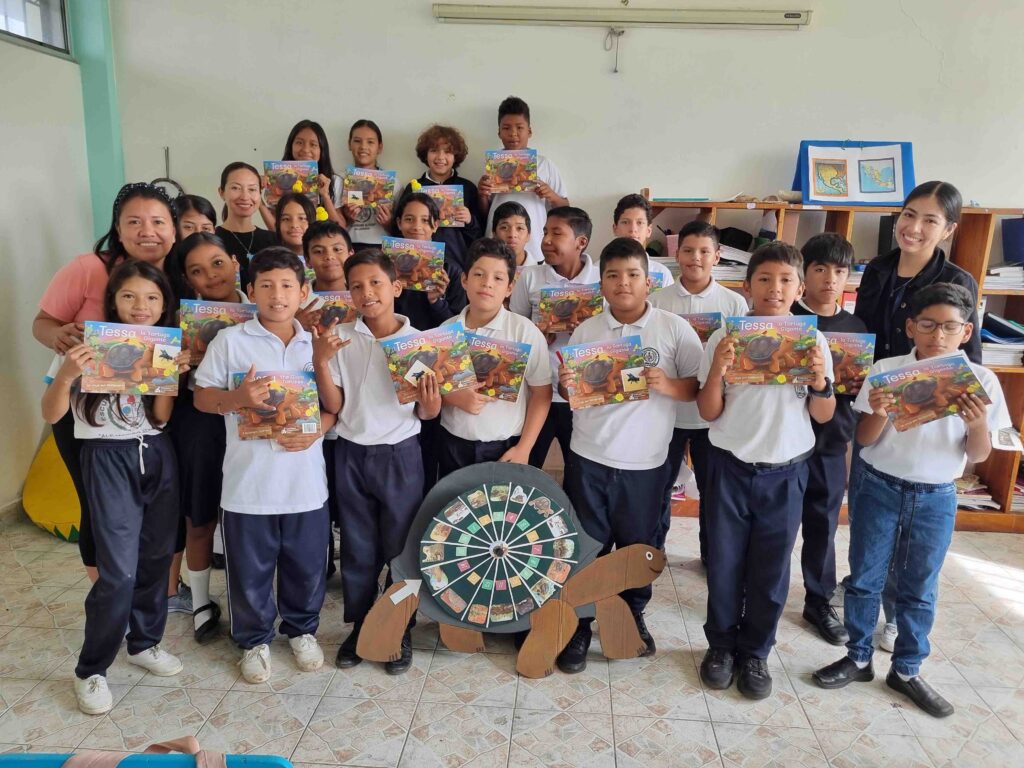Author: Victoria Castro, Leidy Apolo, Lesly Cadena
Edited by: Karina Vivanco
Article reviewed by: Andy Little
Did you know that more than 8,000 local people have participated in community engagement activities created by the Galapagos Science Center? Recognizing that research and environmental action have a significant impact when the community is involved, the Connecting with Nature Program (CWNP) emerged in 2019 as a joint initiative of the Galapagos Science Center (GSC) and the Galapagos Conservation Trust (GCT). The main objective of the program is to promote recreational and educational activities that involve the community in the revaluation and conservation of the natural resources of the Galápagos Islands. Additionally, the CWNP seeks to inspire tangible actions towards the protection of the unique Galápagos ecosystem. With a focus on crucial topics such as climate change, sustainable development, and gender equity, this program has demonstrated a growing interest and commitment from the local community towards the conservation of the archipelago.
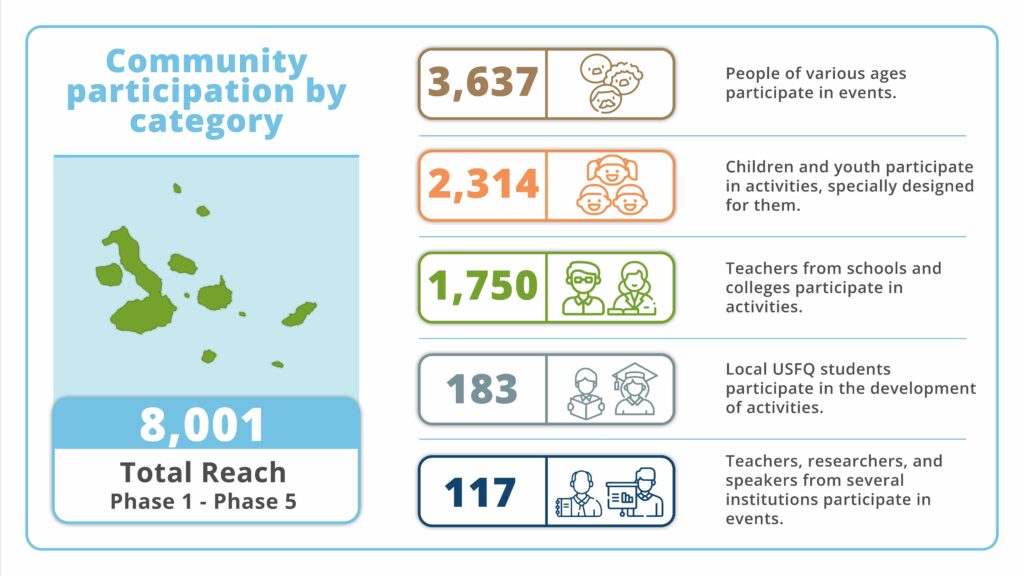
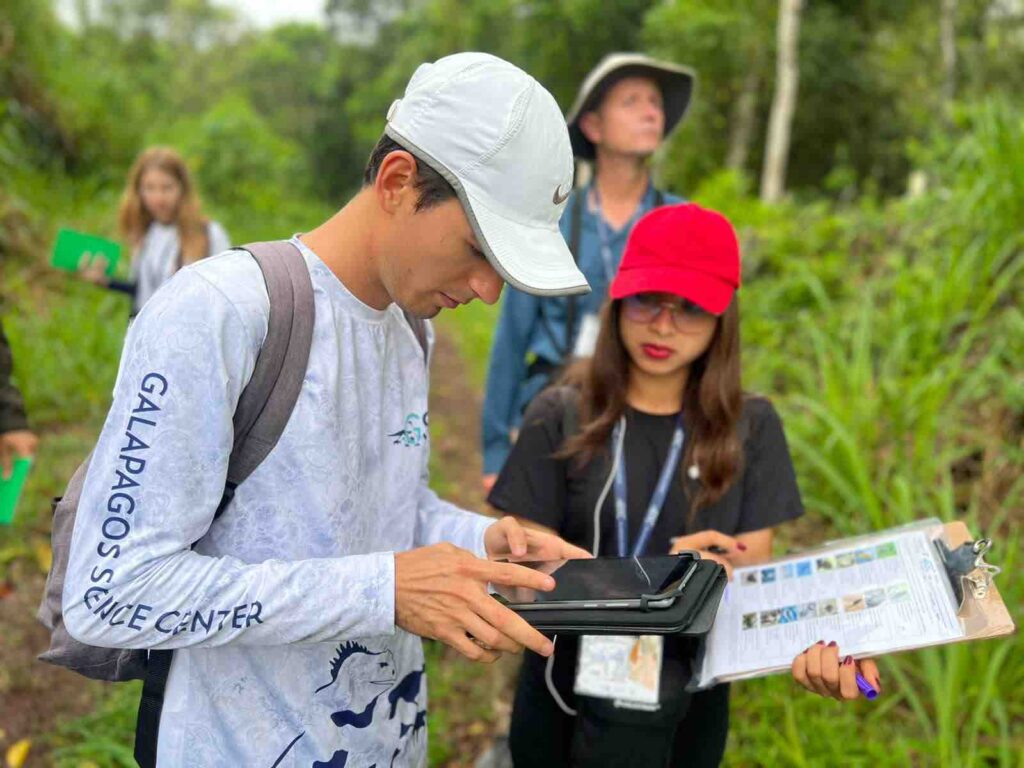
The CWNP has served the Galápagos community through five phases (2019-2023), reaching over 8,000 people. “Research is our driving force and the community our inspiration. The diverse studies addressing environmental and social issues, driven by the GSC, provide us with the guidelines to design projects ranging from reading sessions in local schools to themed events for the whole family, achieving awareness, engagement, motivation to action, and empowerment of children, youth, and adults towards island conservation,” said Leidy Apolo, CWNP coordinator.
The CWNP has offered a wide range of activities aimed at fostering environmental awareness in community members. Among them is the “Virtual Classroom,” an online educational resource that offers the opportunity to access science-based reading sessions, allowing more people to join efforts to promote the love of reading and strengthen values of coexistence and conservation. Also, “Experiential Outings” allows participants to explore ecologically significant sites and get a close look at scientific research processes in the field. Additionally, the CWNP organizes the annual “Shark Day” event, which this year commemorated a decade of celebration in San Cristóbal. This event involved the entire USFQ university community, GSC staff, and international collaborators and featured artistic presentations inspired by the ocean. These and other activities have been designed based on the “Theory of Change,” which states that conservation attitudes and behaviors can be gradually promoted from childhood to adulthood through various interventions.
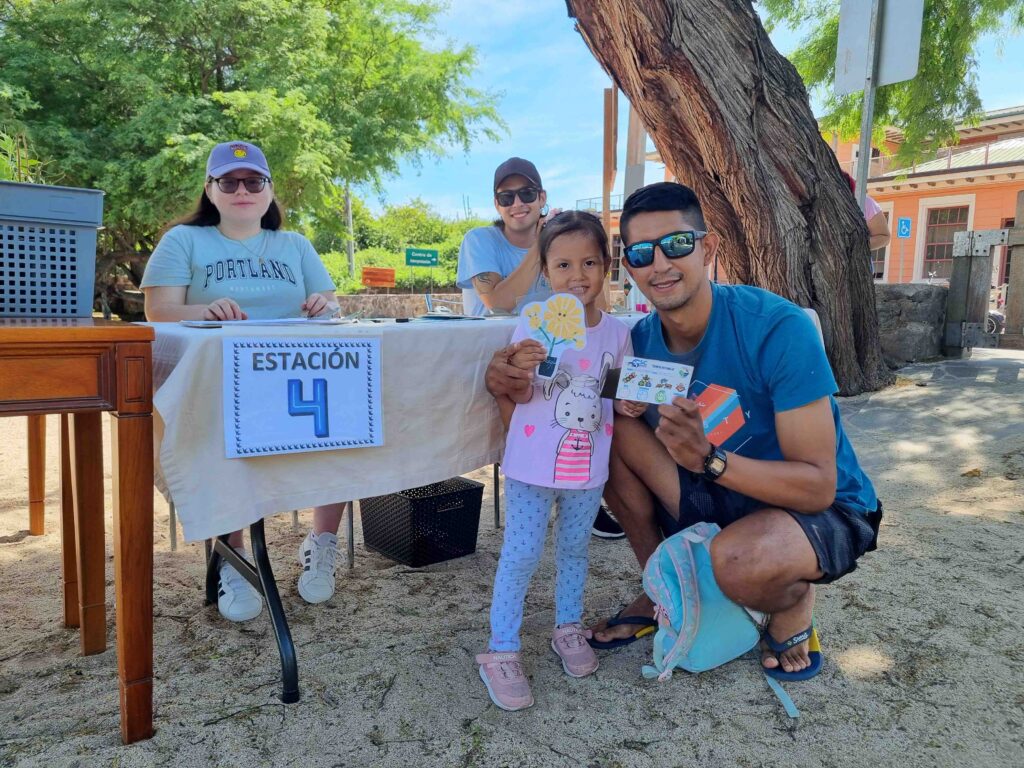
Public and private institutions, educational institutions, and the community have participated in the projects and supported the efforts of scientific outreach carried out through the CWNP and other engagement projects. “Over these five years, we have faced several challenges, such as the multiculturalism of our population, limitations in connectivity, and the Covid-19 pandemic, which led us to transform activities into necessary formats, with the purpose of meeting the needs and expectations, and reaching groups with different characteristics, including people with special needs,” commented Leidy.
During the next phase, the program will implement new educational resources based on sea lions and birds to strengthen the protection of the archipelago’s species. The positive actions of the Galapagueños towards the conservation of biodiversity and the balance of ecosystems drive the CWNP to continue working and motivating the community for the conservation of this magical and privileged place we call home. “Living in the Galápagos is a privilege and at the same time a great commitment to the natural and social environment that surrounds us. Children, youth, and adults have the capacity to be agents of change,” added Lesly.
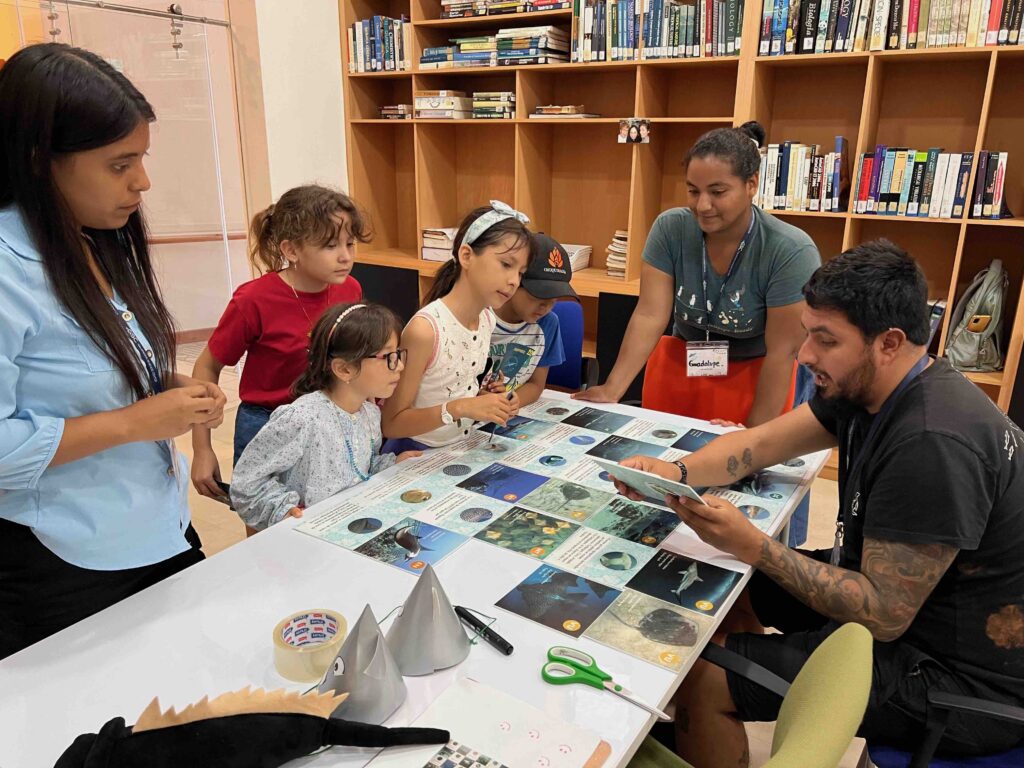
In summary, the CWNP is a comprehensive initiative that strengthens the bond between the Galápagos community and its natural environment. Through five phases, it has generated increased interest and commitment to the conservation of the archipelago. Through educational activities, it has inspired concrete actions to protect the Galápagos ecosystem. With the support of the GSC and the GCT, the CWNP has been a driving force for promoting conservation, demonstrating the power of environmental education and community collaboration for environmental protection.
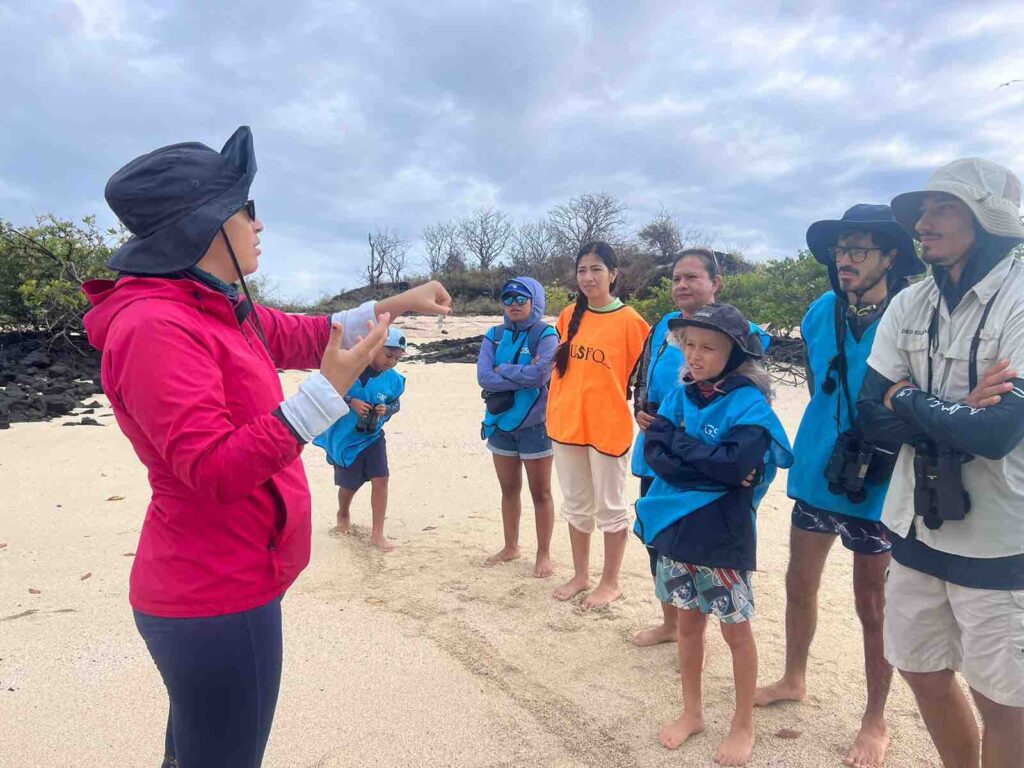
Learn more about the CWNP and its activities on our website: www.galapagosscience.org/community/

